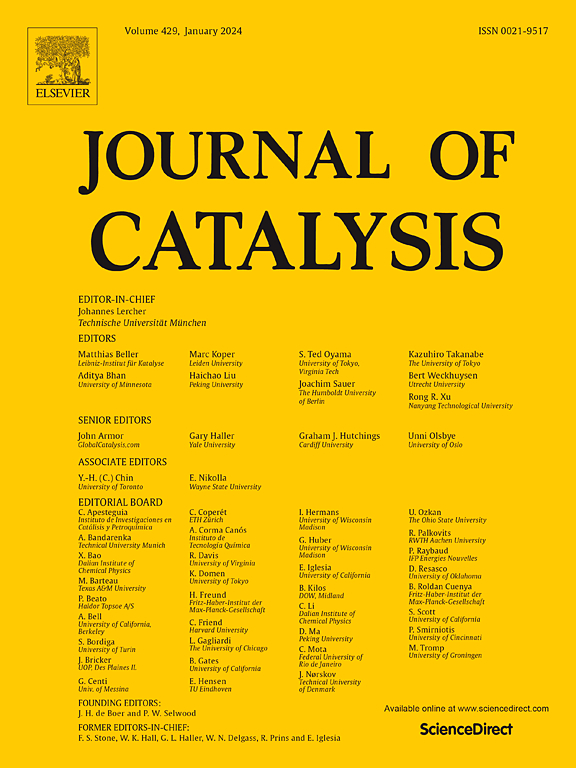使用二氧化碳和 NH3 的镍催化 CS 键的氰化反应
IF 6.5
1区 化学
Q2 CHEMISTRY, PHYSICAL
引用次数: 0
摘要
催化裂解 CS 键是构建功能化分子的重要方法。在此,我们首次利用二氧化碳作为碳源,开发了从硫醚催化合成腈的方法。这项研究在镍膦催化剂和氢硅烷的帮助下,通过异氰酸酯中间体从 CO2 和 NH3 生成 "CN "基团,从而解决了避免使用有毒氰化物的难题。多种芳基硫醚被高效地转化为相应的芳基腈,显示出良好的官能团耐受性,包括氟、吗啉、哌嗪酰胺和氰基。此外,氯阴离子可能通过促进 Ni-S 键裂解来促进 Ni (I) 物种的生成,从而提高了整个反应的效率。本文章由计算机程序翻译,如有差异,请以英文原文为准。


Nickel-catalyzed cyanation of C—S bond using CO2 and NH3
Catalytic cleavage of C—S bonds is an important approach in the construction of functionalized molecules. Herein, we developed the catalytic synthesis of nitriles from thioethers, utilizing CO2 as the carbon source for the first time. This work addressed the challenge of avoiding toxic cyanides by generating the “CN” group via isocyanate intermediates from CO2 and NH3 with the aid of Ni-phosphine catalysts and hydrosilane. A wide range of aryl thioethers were efficiently converted into the corresponding aryl nitriles, demonstrating good functional groups tolerance including fluorine, morpholine, piperazine amide, and cyano group. Additionally, chloride anion played essential roles probably through facilitating the generation of Ni (I) species by promoting Ni—S bond cleavage, thus enhancing the overall reaction efficiency.
求助全文
通过发布文献求助,成功后即可免费获取论文全文。
去求助
来源期刊

Journal of Catalysis
工程技术-工程:化工
CiteScore
12.30
自引率
5.50%
发文量
447
审稿时长
31 days
期刊介绍:
The Journal of Catalysis publishes scholarly articles on both heterogeneous and homogeneous catalysis, covering a wide range of chemical transformations. These include various types of catalysis, such as those mediated by photons, plasmons, and electrons. The focus of the studies is to understand the relationship between catalytic function and the underlying chemical properties of surfaces and metal complexes.
The articles in the journal offer innovative concepts and explore the synthesis and kinetics of inorganic solids and homogeneous complexes. Furthermore, they discuss spectroscopic techniques for characterizing catalysts, investigate the interaction of probes and reacting species with catalysts, and employ theoretical methods.
The research presented in the journal should have direct relevance to the field of catalytic processes, addressing either fundamental aspects or applications of catalysis.
 求助内容:
求助内容: 应助结果提醒方式:
应助结果提醒方式:


